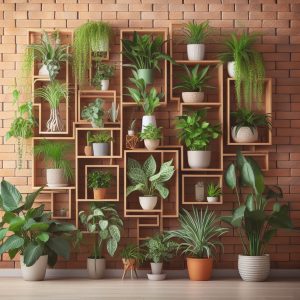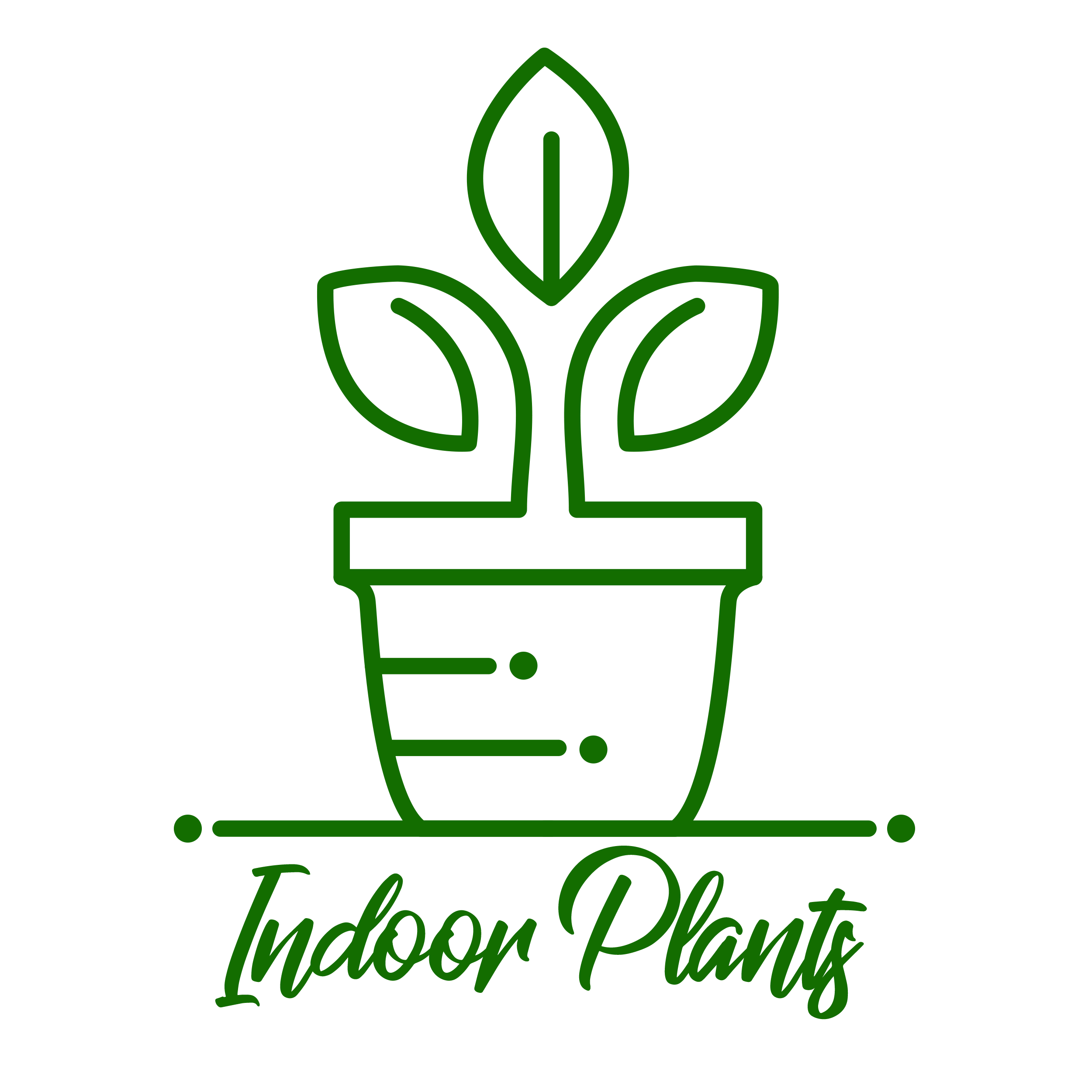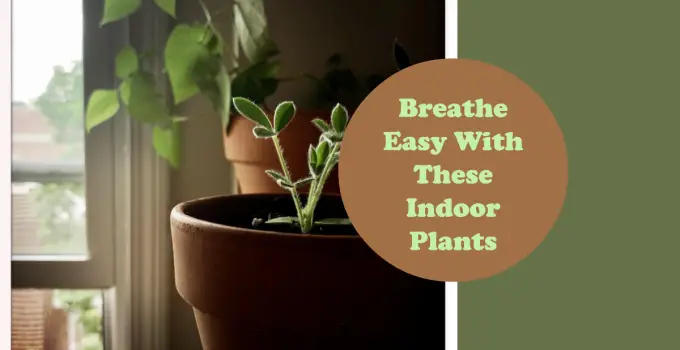Coleman SaluSpa Tahiti Inflatable Hot Tub Spa, 2-4 Person AirJet Spa
$641.08 (as of May 13, 2024 04:39 GMT +00:00 - More infoProduct prices and availability are accurate as of the date/time indicated and are subject to change. Any price and availability information displayed on [relevant Amazon Site(s), as applicable] at the time of purchase will apply to the purchase of this product.)XXXFLOWER Plant Terrarium with Wooden Stand, Air Planter Bulb Glass Vase Metal Swivel Holder Retro Tabletop for Hydroponics Home Garden Office Decoration - 3 Bulb Vase
$20.98 (as of May 13, 2024 04:44 GMT +00:00 - More infoProduct prices and availability are accurate as of the date/time indicated and are subject to change. Any price and availability information displayed on [relevant Amazon Site(s), as applicable] at the time of purchase will apply to the purchase of this product.)Introduction
Indoor air pollution is an increasing health concern, with the EPA finding indoor air quality is often 2 to 5 times worse than outdoor air quality. The good news is certain houseplants can help purify indoor air while also increasing oxygen levels. In this extensive guide, we cover the 25 best indoor plants for oxygen and purifying air in your home or office.
For each plant, we provide details on its air-purifying abilities, oxygen production, optimal growing conditions, and care requirements. We also include helpful tables summarizing the top air-purifying plants, hard-to-kill houseplants, low-light plants, and kid and pet-friendly options.
Read on to learn which plants you should add to your home to boost air quality and oxygen levels in a natural, beautiful way.
Why Indoor Plants Purify Air
Here’s an overview of why certain houseplants are so beneficial for indoor air quality:
– They absorb volatile organic compounds (VOCs) – Plants take in harmful VOCs like formaldehyde and benzene commonly found in furniture, cleaning solutions, and off-gassing from new materials in homes.
– They remove airborne germs – Microbes on leaves catch and neutralize airborne germs and particles as air circulates past plant leaves.
– They increase humidity – The transpiration process releases moisture into the air, combating the low humidity caused by heating and air conditioning systems.
– They produce oxygen – During photosynthesis, plants use CO2 and release oxygen back into the air. NASA found certain plants like Sansevieria produced oxygen even at night.
Top 5 Air Purifying Indoor Plants
If you want maximum air purification from just a few houseplants, focus on getting these 5 into your home:
1. Snake Plant – The snake plant, or mother-in-law’s tongue, is a hardy indoor plant well known for filtering out formaldehyde, xylene, toluene, and other pollutants. This makes it one of the best air purifying plants according to NASA studies.
2. Areca Palm – With wide leaf surfaces and rapid growth rate, this palm is great at removing VOCs and humidifying dry indoor air. It’s one of the best air purifiers and thrives in most indoor conditions.
3. Peace Lily – A moisture-loving plant, the peace lily effectively combats mold spores and airborne germs. Studies show it to be an effective air-cleaning plant.
4. Spider Plant – The fast-growing spider plant is adept at absorbing nitrogen oxide, formaldehyde, carbon monoxide, and other toxins while also increasing oxygen levels.
5. English Ivy – This popular hanging plant is effective at reducing airborne mold, fecal matter bacteria, and formaldehyde in home or office environments.
The 25 Best Air Purifying Indoor Plants

1. Snake Plant
The snake plant, commonly called mother-in-law’s tongue or Saint George’s sword, is one of the best houseplants for filtering out airborne toxins like formaldehyde, xylene, and toluene. This tough plant also filters out nasty VOCs from paints, solvents, and other synthetic materials. The ideal snake plant has stiff, upright leaves with yellow or light green edges. Minimal watering and bright light keep it thriving.
Air Purifying Abilities: Filters formaldehyde, trichloroethylene, xylene, toluene, and benzene.
Oxygen Production: High, produces oxygen during the day and night.
Growing Conditions: Prefers bright, indirect light. Allow soil to dry between watering. Intolerant of overwatering.
Basic Care: Water when the top several inches of soil are dry. Wipe leaves with a damp cloth to remove dust. Divide crowded plants.
2. Areca Palm
With its lush, feathery fronds and upright, woody stems, the areca palm filters indoor air effectively while humidifying spaces and giving off oxygen. It’s one of the best air purifying plants according to studies. The areca palm removes VOCs like xylene, toluene, and formaldehyde from adhesives, solvents, and synthetic materials. Grow this palm in bright indirect light with moderate watering.
Air Purifying Abilities: Eliminates VOCs including benzene, xylene, and toluene.
Oxygen Production: High oxygen production.
Growing Conditions: Prefers 60°F to 75°F and indirect sunlight. Moderate watering.
Basic Care: Water when the top few inches of soil are dry. Mist leaves often for humidity. Rotate the plant periodically.
3. Peace Lily
The graceful Peace lily removes mold spores, airborne germs, trichloroethylene, and benzene from indoor air. Watering and misting this plant also boosts humidity levels. Place peace lilies in shady spots and water when the top inch of soil dries. Filtered light also helps the lush dark leaves flourish.
Air Purifying Abilities: Removes mold, bacteria, airborne germs, and VOCs.
Oxygen Production: Low oxygen production.
Growing Conditions: Prefers shade and consistently moist soil. Intolerant of droughts.
Basic Care: Water when the top inch of soil dries out. Mist leaves often. Wipe leaves to remove dust buildup.
4. Spider Plant
Spider plants thrive in hanging baskets or on table tops where their trailing shoots with plantlets can gracefully cascade. The spider plant absorbs nitrogen oxide, formaldehyde, carbon monoxide, xylene, and other pollutants while also producing oxygen. Let the soil dry out some between watering and provide bright, indirect light for best results.
Air Purifying Abilities: Removes formaldehyde, xylene, and carbon monoxide.
Oxygen Production: High oxygen is released during the day.
Growing Conditions: Tolerates partial shade to full sun. Moderate watering.
Basic Care: Water when the soil is partly dry. Cut off brown leaf tips as needed. Transplant offsets when overcrowded.
5. English Ivy
English ivy is a popular indoor hanging plant option thanks to its beautiful trailing stems. It effectively removes airborne mold, fecal matter bacteria, and formaldehyde found in homes and offices. Cascading ivy plants prefer bright, indirect light locations for the best growth. Allow soil to dry out some before watering ivy plants.
Air Purifying Abilities: Shown to reduce airborne mold and bacteria. Also absorbs formaldehyde.
Oxygen Production: Low to moderate oxygen production.
Growing Conditions: Tolerates low to bright indirect light. Water when soil partly dries.
Basic Care: Water when the top few inches of soil are dry. Wipe leaves down to remove dust buildup. Cut back as needed.
6. Chrysanthemum
With showy, colorful blooms and a pleasant aroma, the chrysanthemum is a natural air purifier according to NASA testing. It effectively removes benzene, formaldehyde, ammonia, xylene, and other pollutants. Water when the soil surface is dry to the touch and keep them in bright, sunny locations for best performance.
Air Purifying Abilities: NASA testing found it eliminates ammonia, benzene, formaldehyde, and xylene.
Oxygen Production: Low oxygen generation.
Growing Conditions: Likes sun but can tolerate partial shade. Allow soil to dry between watering.
Basic Care: Water when the soil surface is dry. Deadhead spent flowers. Provide plant food monthly during the growing season. Prune back in the fall.
7. Dracaena
Easy to grow and care for, different dracaena species are found in many homes and offices. The stiff, spear-shaped leaves work to filter out trichloroethylene, formaldehyde, xylene, toluene, and benzene. Allow soil to dry between waterings and give dracaena bright, indirect light for best results. Regularly dusting leaves also optimizes air purification.
Air Purifying Abilities: Removes formaldehyde, trichloroethylene, xylene, toluene, and benzene.
Oxygen Production: Low to moderate oxygen generation.
Growing Conditions: Tolerates low to bright indirect light. Moderate watering.
Basic Care: Water when the soil is partly dry. Occasionally mist leaves and wipes away dust. Rotate the plant periodically for even growth.
8. Florist’s Chrysanthemum
Not to be confused with the garden chrysanthemum, the florist’s chrysanthemum sold in markets has been shown to effectively remove benzene, formaldehyde, ammonia, xylene, and other indoor pollutants. Water when the soil feels dry and give them plenty of bright, indirect sunlight for the best blooms and air cleaning power.
Air Purifying Abilities: Tested by NASA to remove benzene, formaldehyde, ammonia, and xylene.
Oxygen Production: Low oxygen generation.
Growing Conditions: Likes direct sun but can tolerate partial shade. Allow soil to dry between waterings.
Basic Care: Water when the soil is partly dry. Fertilize every 2-4 weeks. Remove deadhead stems to prolong blooming. Discard after flowering.
9. Weeping Fig
The graceful weeping fig filters out common VOCs including xylene, toluene, and formaldehyde. Its trailing vines and large green leaves give it an attractive appearance. Keep weeping figs in medium to bright indirect light and water when the top inch of soil dries out. Mist leaves regularly to optimize air purification.
Air Purifying Abilities: Removes xylene, toluene, and formaldehyde.
Oxygen Production: Low oxygen generation.
Growing Conditions: Tolerates low to bright indirect light. Allow soil to partly dry between watering.
Basic Care: Water when the top inch of soil dries. Wipe dust off leaves every few weeks. Prune back to control size.
10. Barberton Daisy
Brighten up indoor spaces with the vibrant flowers of Barberton daisies. Available in many colors like yellow, orange, pink, and red, they work 24/7 to filter out trichloroethylene and benzene. Water when the soil partly dries and gives Barberton daisies lots of indirect sunlight for best growth and purification.
Air Purifying Abilities: Effectively eliminates trichloroethylene and benzene.
Oxygen Production: Low oxygen generation.
Growing Conditions: Prefers indoor temps 70°F to 75°F and indirect sunlight. Moderate watering.
Basic Care: Water when the soil is partly dry. Apply fertilizer every 2-4 weeks. Cut off old flowers to encourage new blooms.
11. Heart Leaf Philodendron
The lush, deep green heart-shaped leaves of the Philodendron scandens make it a pretty addition to desks or shelves. As a bonus, this philodendron filters out formaldehyde, which is commonly used in foam insulation, particle boards, and various plastics. Provide bright, indirect light and allow soil to dry between watering for best results.
Air Purifying Abilities: Shown to effectively remove formaldehyde.
Oxygen Production: Low oxygen generation.
Growing Conditions: Tolerates low to medium indirect light. Water when partly dry.
Basic Care: Water when the top several inches of soil are dry. Wipe leaves with a damp cloth to remove dust. Mist leaves for humidity.
12. Purple Waffle Plant
Sometimes called the red ivy, the purple waffle plant has colorful, textured leaves that give it visual appeal. It also works to filter out harmful xylene, toluene, and formaldehyde from indoor air. Growing in a hanging basket allows leaves maximum exposure to purify the air. Provide bright light to partial sun and moderate watering.
Air Purifying Abilities: Removes xylene, toluene, and formaldehyde.
Oxygen Production: Low oxygen production.
Growing Conditions: Likes indoor temperatures of 60°F to 80°F. Prefers partial sun to full sun. Moderate watering.
Basic Care: Water when the soil is partly dry. Wipe leaves often to remove dust and promote absorption of pollutants. Trim back overgrown stems.
13. Red-Edged Dracaena
The red-edged dracaena is a visually striking plant with green and red striped, pointed leaves. It filters out five major toxins including xylene, trichloroethylene, formaldehyde, toluene, and benzene, making it a great choice for combating indoor pollution. Provide moderately bright light to stimulate oxygen production. Allow soil to dry some between watering for best growth.
Air Purifying Abilities: Shown to remove xylene, trichloroethylene, toluene, formaldehyde, and benzene.
Oxygen Production: Low to moderate oxygen generation.
Growing Conditions: Tolerates low to bright indirect light. Allow soil to partly dry between watering.
Basic Care: Water when soil is dry several inches down. Wipe dust off leaves every few weeks with a damp cloth. Rotate the plant for even growth.
14. Warneck Dracaena
The Warneck dracaena has green leaves with white curving stripes that make it stand out. According to multiple studies, this dracaena efficiently eliminates trichloroethylene, benzene, formaldehyde, xylene, and toluene from indoor spaces. Allow soil to dry before watering again and provide bright, indirect light. Consider occasionally rinsing dust off the leaves.
Air Purifying Abilities: Removes trichloroethylene, benzene, formaldehyde, xylene, and toluene.
Oxygen Production: Low to moderate oxygen generation.
Growing Conditions: Prefers 60°F to 75°F and indirect sunlight. Allow soil dryness between watering.
Basic Care: Water when the soil is partly dry. Wipe dust off leaves every few weeks. Mist leaves occasionally for moisture. Rotate the plant periodically.
15. Boston Fern
Boston ferns grow well in indoor hanging baskets where they can trail gracefully. Their ruffled green fronds work to filter out common VOCs like formaldehyde, xylene, and toluene. Keep Boston ferns away from direct sun and water several times a week so the soil stays moist. Consider misting the leaves to optimize air purification.
Air Purifying Abilities: Removes formaldehyde, xylene, and toluene.
Oxygen Production: Low oxygen generation.
Growing Conditions: Prefers cool temps 60°F to 75°F and indirect sunlight. Keep soil moist.
Basic Care: Water several times a week to keep the soil moist. Mist leaves regularly. Cut back fronds as needed.
16. Kimberly Queen Fern
The Kimberly queen fern has attractive bright green fronds and works quietly to filter formaldehyde, xylene, and toluene from indoor air. This low-maintenance fern thrives with regular watering, indirect light, and humid conditions. Keep it away from direct sun to prevent scalding of the delicate leaves. Consider misting the leaves to help optimize air purification.
Air Purifying Abilities: Removes formaldehyde, xylene, and toluene VOCs.
Oxygen Production: Low oxygen generation.
Growing Conditions: Likes partly shady indoor areas. Keep soil moist but not soggy. Prefers humidity.
Basic Care: Water several times a week to keep the soil moist. Mist leaves regularly. Cut off dead or damaged fronds promptly.
17. Janet Craig Dracaena
The Janet Craig dracaena has strappy green leaves with pale yellow edges that give it a bold look. It’s also very effective at removing trichloroethylene, benzene, formaldehyde, and xylene from indoor air according to studies. Allow the soil to partly dry between waterings and provide moderate light and humidity for optimal growth.
Air Purifying Abilities: Shown to eliminate trichloroethylene, benzene, formaldehyde, and xylene.
Oxygen Production: Low oxygen generation.
Growing Conditions: Tolerates low to moderate light. Moderate watering. Likes humidity.
Basic Care: Water when soil partly dries. Mist leaves regularly and rotates plants for even growth. Wipe dust off leaves every few weeks.
18. Flamingo Lily
Known for its showy red, pink, or white spathes, the flamingo lily filters out five major toxins from indoor air. Give this tropical plant bright, filtered light and high humidity. Water when the top inch of soil dries out. Avoid overwatering to prevent root rot in this moisture-loving plant. Consider misting the leaves to optimize air purification.
Air Purifying Abilities: Removes ammonia, xylene, toluene, formaldehyde, and trichloroethylene.
Oxygen Production: Low oxygen generation.
Growing Conditions: Prefers 60°F to 90°F range and indirect sunlight. Keep soil moist but not soggy. Likes humidity.
Basic Care: Water when the top inch of soil dries. Mist leaves regularly. Wipe dust off leaves every few weeks with a damp cloth.
19. Chinese Evergreen
The Chinese evergreen is an easy-care plant that thrives in most indoor conditions. With its upright stems and variegated leaves, it’s known to effectively remove benzene, formaldehyde, and trichloroethylene from indoor spaces. Water when the top inch or two of soil is dry and avoid overwatering which can lead to root rot.
Air Purifying Abilities: Shown to remove benzene, formaldehyde, and trichloroethylene.
Oxygen Production: Low oxygen production.
Growing Conditions: Tolerates low light. Allow soil to partly dry between waterings.
Basic Care: Water when the top inches of soil are dry. Wipe dust off leaves every few weeks. Divide crowded plants.
20. Golden Pothos
With its lush, heart-shaped leaves, golden pothos is a popular low-maintenance houseplant. It’s effective at removing formaldehyde, benzene, and carbon monoxide from indoor air. Let the soil partially dry between waterings and give it bright indirect light for best results. Consider misting leaves regularly to boost air purification.
Air Purifying Abilities: Shown to eliminate formaldehyde, benzene, and carbon monoxide.
Oxygen Production: Low oxygen generation.
Growing Conditions: Tolerates low light. Moderate watering.
Basic Care: Water when partly dry. Wipe dust off leaves every few weeks. Trim back overgrown vines.
21. Bamboo Palm
Also called the reed palm, the bamboo palm has long, green fronds and is effective at filtering out benzene, trichloroethylene, and formaldehyde. This compact palm thrives in bright, indirect light with moderate watering. Consider misting the leaves regularly to help remove air pollutants.
Air Purifying Abilities: Shown to remove benzene, trichloroethylene, and formaldehyde.
Oxygen Production: Low oxygen generation.
Growing Conditions: Likes bright indirect sunlight. Allow soil to partly dry between waterings.
Basic Care: Water when the top few inches of soil are dry. Wipe dust off leaves every few weeks. Mist leaves for humidity.
22. Rubber Plant
The rubber plant has large, glossy leaves that give it an attractive appearance. It’s known to effectively remove formaldehyde, carbon monoxide, and trichloroethylene from indoor spaces. Allow soil to dry out partially between waterings. Provide bright, indirect sunlight for best results.
Air Purifying Abilities: Shown to eliminate formaldehyde, carbon monoxide, and trichloroethylene.
Oxygen Production: Low oxygen generation.
Growing Conditions: Prefers consistently moist soil and indirect sun. Intolerant of long dry periods.
Basic Care: Water when a few inches of soil are dry. Wipe dust off leaves every few weeks. Avoid direct sun which can scorch leaves.
23. Variegated Snake Plant
The variegated snake plant has green leaves with yellow edges that give it an eye-catching appeal. Like the regular snake plant, it effectively removes formaldehyde, trichloroethylene, benzene, and xylene from indoor spaces. Allow soil to dry out between waterings and provide bright, indirect light.
Air Purifying Abilities: Filters out formaldehyde, trichloroethylene, benzene, and xylene.
Oxygen Production: Moderate oxygen generation.
Growing Conditions: Prefers dry soil between waterings and bright, indirect light.
Basic Care: Water when the soil is dry a few inches down. Wipe dust off leaves every few weeks. Remove dead leaves promptly.
24. Red-Margined Dracaena
The red-margined dracaena has green leaves with striking red edges. According to studies, this dracaena is effective at removing formaldehyde, xylene, toluene, and benzene from indoor air. Allow soil to partially dry between waterings and provide moderate to bright indirect light.
Air Purifying Abilities: Shown to eliminate formaldehyde, xylene, toluene, and benzene.
Oxygen Production: Low oxygen production.
Growing Conditions: Prefers moderately bright indirect light. Moderate watering.
Basic Care: Water when partially dry. Wipe dust off leaves every few weeks. Rotate the plant periodically for even growth.
25. Corn Plant
The corn plant has long, arched foliage that gives a tropical look to indoor spaces. It’s effective at removing trichloroethylene, benzene, and formaldehyde from the air. Allow soil to partially dry between waterings and provide bright, indirect light.
Air Purifying Abilities: Shown to remove trichloroethylene, benzene, and formaldehyde.
Oxygen Production: Low oxygen generation.
Growing Conditions: Prefers bright indirect light. Moderate watering.
Basic Care: Water when partially dry. Dust leaves every few weeks. Rotate the plant for even sunlight exposure.




























